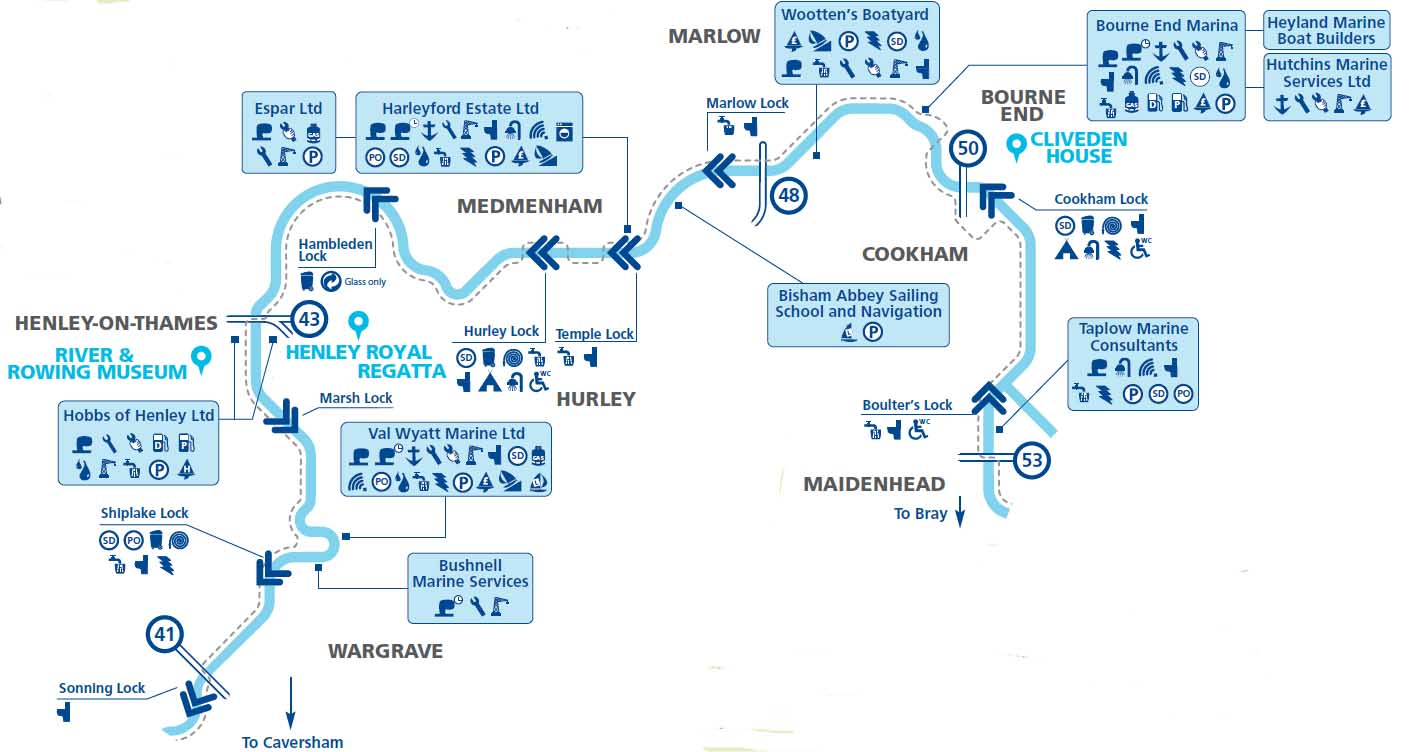* NOTE: Temple Lock figures are not available online! * The three locks diagram centred on Temple Lock is not available
Right bank lock, tel: 01628 824333, length: 134'7", width: 17'11"
and next to it boat rollers on the site of an old lock (see 1890 below)
1544: The winch in Bisham, in tenure of John Brynkehurst,
Temple Mills under one roof, and a fishery
extending from Temple Locke, were granted to
Thomas Persse.
1585: Bishop: John Brinkys owner of the locke
1773: Temple Pound Lock was built
1777: A small brick lock house was built
1782: The Pound lock had to be rebuilt
1785: There was still a rope ferry.
1794: Report of a survey of the river Thames between Reading and Isleworth ... John Rennie (the Elder)
Here again is an excellent weir and sluice, by which the height of the water can easily be regulated.
There were five feet three inches in the upper sill, and four feet eleven inches on the lower sill;
the water in the pond below being six inches under pen.
The entrance and exit from the tail of Temple Lock is much exposed to the floods,
which pass over the mill weir, and the bank opposite has been greatly cut away by the floods.
I would advise this bank to be sloped, and a quantity of flint stones, or pieces of chalk,
thrown down at the foot of the slope, which would greatly assist in defending the bank.
1796: Complaint by Thomas Toovey, bargemaster of Oxford, and others
... that they had frequently been refused to have the Lock and Bucks drawn in such a manner as that the Western flashes which they had brought at different times from above Oxford might pass in a body as they ought to carry the barges on below and that they expected that very night a large flash to come down for the purpose of carrying a great number of boats now lying for want of water between Marlow and Stanes.
Fred Thacker says that the commissioners took energetic action:
About twelve o'clock, the water being then at best, the Lock and floodgates of the Mills were drawn, and suffered the flash to pass in a proper manner; which had the desired effect of carrying the barges through the whole of the Commissioners' jurisdiction.
[ There was apparently much less water in the Thames than there is today. Barges drawing more than a couple of feet could only proceed if a flash (surge) of water was let off from the weir above. This was not quite as alarming as it sounds. Flashes travelled down river at something under one mile per hour and therefore it was entirely feasible for a towed barge to stay with a flash all the way down the river if the keepers co-operated and opened their weirs at the right moment. Since some of them were also millers, or employed by millers, with a vested interest in keeping as much head of water for their wheels as possible there were obviously problems likely to arise. ]
1803: A new ferry boat
1866: A wire was stretched across the weir
1872: Weir rebuilt
1874: The lock was described as a conglomeration of rotten piles
1875: The wire, being only two feet above the
water, caused an accident (does that imply someone trying to use the old
flashlock?) Col. Williams was requested to remove the wire.
1878: Breakwater built below lock.
1880: Temple Lock, Henry Taunt -

Temple Lock, Henry Taunt, 1880
© Oxfordshire County Council Photographic Archive; HT3336
1890: The new lock was built alongside the old one. Rollers were built on the site of the old lock
2004: In Temple Lock -

Temple Lock, 2004
The author manually closing the top
gates after an early morning start.
[ for the benefit of Oxford punters that is the back, stern, till or deck you can see. I have just entered the lock! Notice my good long rope and "44 locks navigated" brass plaque. ]

Temple Lock Sign, 2006
